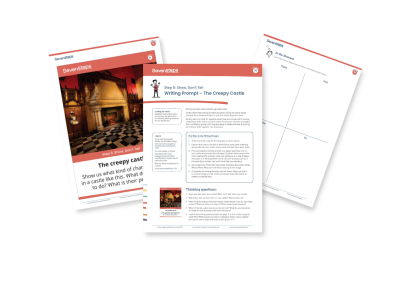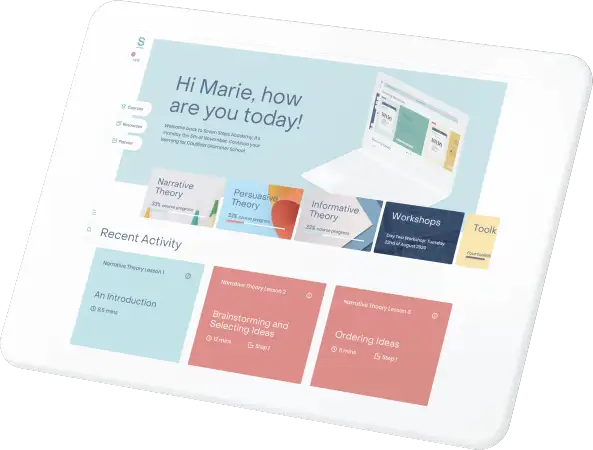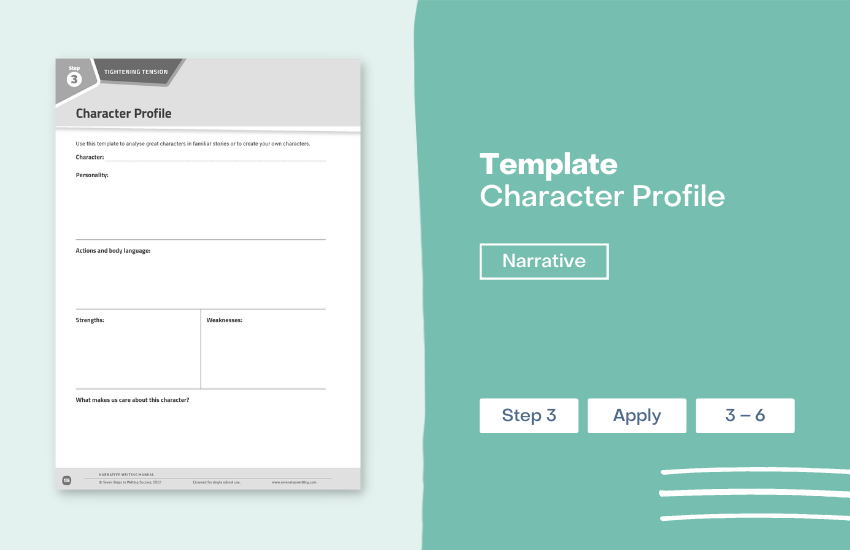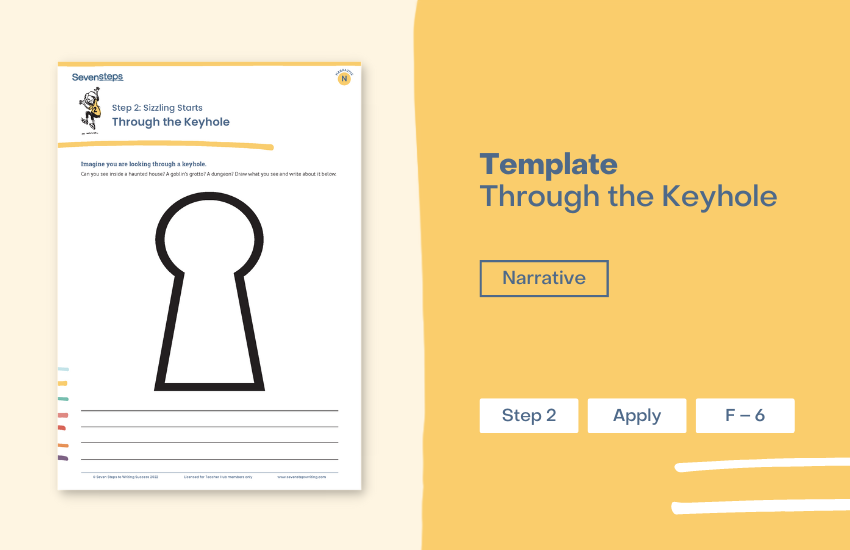Boo! It’s time to get your scare on: hello, Halloween!
Many of us love to dress up for Halloween, but it’s also the perfect time to go beyond spooky sartorial choices and inspire creativity in the writing classroom.
These 6 spooky writing activities for Halloween will help your students create a creepy tale or two.
Show us what kind of character lives in a castle like this.
What do they love to do?
What is their pet like?
Seven Steps members can access the teaching notes for The Creepy Castle writing prompt on Teacher Hub!
Not a member? View subscription options.

2. Creating Creepy Character Profiles
This activity and template has been extracted from our new Narrative Writing Manual.
For a story to have tension, the writer must create characters with depth that the reader can empathise with.
- Start by discussing characters from familiar spooky stories. What do we know about them? What are their strengths and weaknesses? What makes us care about them?
- As a class, brainstorm a list of possible spooky characters (e.g. a vampire, a mummy, Frankenstein).
- Ask students to form pairs and pick a character from the class list, then brainstorm ideas to create a profile of their chosen character using template below from the Narrative Writing Manual.
- Ask students to write a brief description of their spooky character based on the ideas in the profile. Challenge them to write it in a way that makes the reader want to know more.
4. Persuasive Fast Starts Challenge
This is one of the best ways to increase your students’ engagement and bring the fun into your writing lessons.
- Here are the topics:
- Trick-or-treating is dangerous
- Ghosts do exist
- Vampires vs werewolves
- Halloween is better than Christmas
- Being scared is fun
- Set a 60 second timer.
- Students write a Sizzling Start for each topic. After going through each topic, every student should have 5 different Sizzling Starts.
- Ask students to share their favourite Sizzling Start in groups of 3–4. This will help them generate more ideas, develop concepts and learn from each other.
New to the Seven Steps? Sign up for a free Starter account to get all the resources you need to learn, teach, apply and assess Step 2: Sizzling Starts.
5. Spooky Stories
Using random words as the basis for a story is a great way to spark students’ creativity.
- As a class, watch the spooky story in the following video (watch from 1:30 to 2:20):
- Get each student to write a word they associate with spooky stories on a strip of paper.
- Place the strips of paper into a hat.
- Ask each student to pull a strip of paper from the hat.
- Get students to form groups of three and work together to write their own spooky story based on their words.
For example: attic, moon, bat.
‘She pushed open the attic door. It made a long, high-pitched creaking sound. She slowly tiptoed into the darkroom and tried the light switch. No luck. Something rustled in the corner of the room, disturbed by her entrance.
‘I hope it’s a mouse,’ she shuddered.
The moon shone its faint light through the small window. Slowly, a shadow began to appear: large wings, a pointed head. A bat, bigger than any ordinary bat.’
For younger students:
One Dark Night, In the Middle of the Day…
For older students:
The Vampire by Conrad Aiken
The Raven by Edgar Allen Poe
Want to continue improving your students’ poetry writing?
- Blog: ‘Instructions’ – A poem by Neil Gaiman may help students think a little differently about writing a poem.
- Teacher Hub resources:
- Action Activity & writing samples: Teaching Poetry with the Seven Steps
- Story Graphs – Poems

Sizzling Starts is easy to teach, fun to learn and guaranteed to have them cheering for more!




